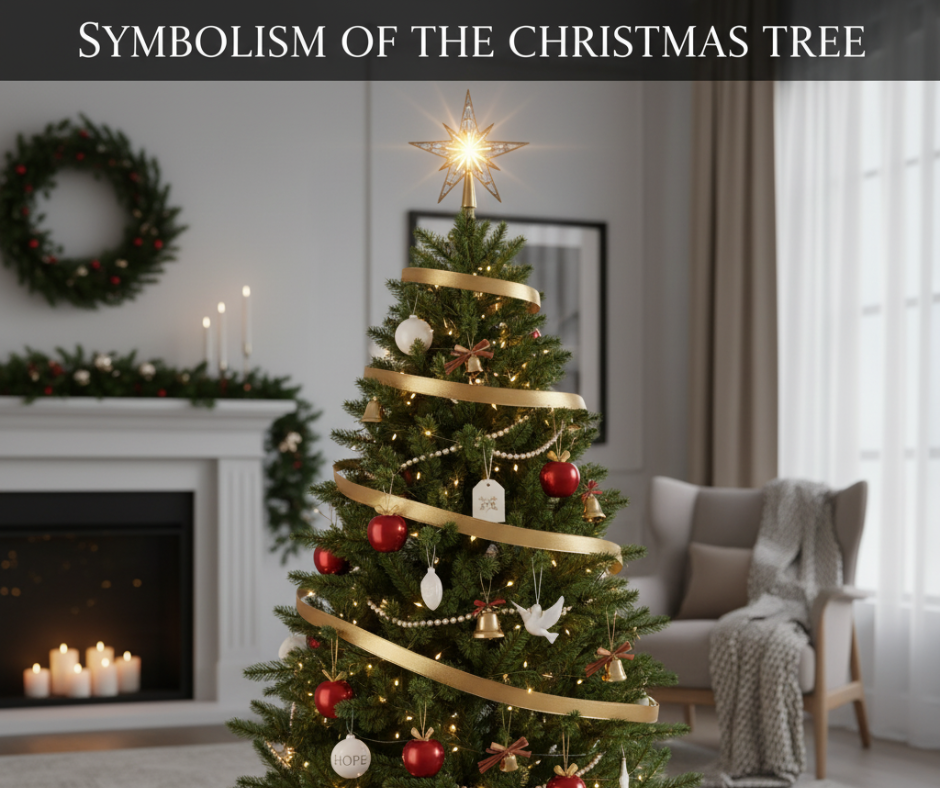The Christmas tree stands as one of the most beloved and recognizable symbols of the holiday season worldwide. Millions of homes, public spaces, and communities gather around the sparkling evergreen to celebrate joy, unity, and tradition. Yet beyond its festive beauty, the Christmas tree holds rich layers of symbolism and meaning that have evolved over centuries.
This comprehensive article explores what the symbolism of the Christmas tree is, tracing its roots through ancient traditions, Christian interpretations, and modern cultural understanding to reveal why this evergreen remains a powerful emblem of the holidays.
Ancient Origins of Evergreen Symbolism of the Christmas Tree
Long before the Christmas tree became a Christian tradition, evergreen plants were revered across cultures for their symbolism of life, endurance, and renewal, especially during winter’s dormancy.
-
Pagan Celebrations: Ancient peoples such as the Druids, Norse, and Egyptians used evergreen boughs during solstice festivals to represent the triumph of life amid darkness and cold.
-
Evergreens symbolized immortality, resilience, and protection against evil or misfortune during dark months.
-
The practice of bringing greenery indoors during winter harkens back to these ancient, nature-based beliefs about cycles and survival.
Christian Symbolism: Eternal Life and Light
With the spread of Christianity, this pagan Symbolism of the Christmas Tree was reinterpreted within the new religious framework.
-
Evergreen as Eternal Life: The tree’s constant greenness represented the everlasting life offered through Jesus Christ.
-
Tree Shape: The upward conical shape pointed towards heaven, symbolizing spiritual aspiration and connection with God.
-
Lights and Candles: Decorating trees with lights symbolized Christ as the “Light of the World,” illuminating darkness and guiding believers.
-
Tree as the Tree of Life: The Christmas tree evokes the Tree of Life mentioned in the Bible, connecting notions of paradise and redemption.
Modern Symbolism and Cultural Significance
Today, the Symbolism of the Christmas Tree embodies a blend of spiritual and secular meanings:
-
Joy and Celebration: The tree represents festive joy, family togetherness, and communal celebration.
-
Hope and Renewal: Placed during winter, the evergreen symbolizes hope for spring and new beginnings.
-
Generosity: The practice of placing gifts beneath the tree underlines themes of giving and kindness.
-
Peace and Unity: The tree serves as a gathering point, fostering connection and harmony.
Symbolism Embedded in Decorations
-
Ornaments: Reflect personal, cultural, or religious significance; historically, fruits represented the Garden of Eden.
-
Star or Angel Toppers: Represent the Star of Bethlehem or the angels announcing Christ’s birth.
-
Garlands and Ribbons: Bind the tree together symbolically, often representing unity and the circle of life.
-
Candy Canes and Lights: Symbolize spiritual messages and festivity.
The Christmas Tree in Different Cultures
While rooted in Western Christianity, the Symbolism of the Christmas Tree has been embraced and adapted worldwide:
-
Variations in tree symbolism reflect local customs and beliefs.
-
In some cultures, the tree is a symbol of cultural identity and national pride as much as religion.
-
Its universal themes of life, light, and family resonate broadly.
Read More: What Kind of Christmas Tree Lasts the Longest? A Guide to Choosing the Most Durable Evergreen
Conclusion
The symbolism of the Christmas tree ranges from ancient pagan roots to rich Christian meanings, culminating in a universal emblem of life, light, hope, and belonging. This evergreen tradition continues to inspire joy and reflection, uniting people across generations and cultures in the spirit of the holidays.



Add a Comment